Diagnosing footrot in sheep
Infection starts when bacteria lodge on the interdigital skin causing inflammation. The skin-horn junction then begins to erode and the horn starts to lift.
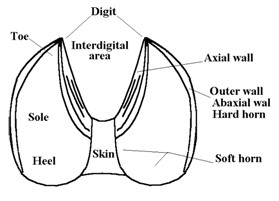
Signs of footrot
Mild reddening of the skin between the digits or toes (interdigital) from complete separation of the horn of the hoof are the first signs of infection.
The bacteria can then move under the horn causing separation of horn around the heel, sole, toe and eventually to the outer wall.
Sheep infected with footrot become progressively more lame and exhibit the following signs in progressive order:
- Inflamed, red and moist skin between the digits.
- A grey pasty scum between the digits.
- Lifting of skin-horn junction between digits.
- Under-running or separation of horn around heel, sole, toe and finally to the outside hoof wall.
Infected feet may also have a characteristic foul smell.
Factors affecting signs of footrot
All of these factors must be considered in assessing any footrot outbreak:
- environment – moisture and temperature in the pasture
- virulence of infecting bacteria
- type of sheep
- stocking rate and proportion of infected sheep.
What happens after infection
After infection, the horn continues to grow and often encapsulates a pocket of infection inside the hoof. This makes detection difficult. New horn growth is often deformed by underlying infection and this provides a diagnostic sign.
During dry periods, the disease naturally regresses in a flock, lameness will decrease accordingly, but infection will survive in many feet. During dry times spread is absent, therefore interdigital signs are minimal.
The succulent nature of footrot affected feet attracts flystrike. Flystruck feet and associated body strike are a common feature of footrot outbreaks.
Severe pain and lameness are always associated with flystruck feet and this causes animal welfare problems.
Examining sheep for footrot
An accurate diagnosis is essential, as early outbreaks of footrot can be difficult to distinguish from other diseases. An early and precise diagnosis will assist in designing the best treatment program, reducing costs and avoiding treatment failures.
Examine as many of your sheep as possible. Examining only one or two sheep can be misleading and may result in unnecessary or incorrect treatment.
An assessment of virulence should also be made. This may require observing development of the infection in individually marked sheep over several weeks.
Animal Health Officers and vets are able to confirm a diagnosis. They can also take samples which will enable a laboratory to confirm the presence and virulence of the bacteria.
Modified Egerton scoring system
To describe footrot at its various stages, a scoring system has been developed, the Modified Egerton Scoring System.
Figure 2 shows a normal foot with no lesion (sign of disease). Zero score.
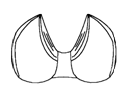
Figure 3 shows a limited mild interdigital dermatitis (scald). Score of 1.
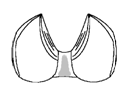
Figure 4 shows more extensive interdigital dermatitis. Score of 2.

Figure 5 shows severe interdigital dermatitis and under-running of the horn of the heel and sole. Score of 3.
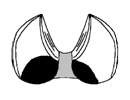
Figure 6 shows severe interdigital dermatitis and under-running of the horn of the heel and sole but with the under-running extending to the walls of the hoof. Score of 4.
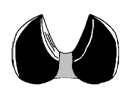
Conditions similar to footrot
Diseases and conditions that can appear similar to footrot are:
- Foot abscess – usually only one foot affected with swelling and pus.
- Scabby mouth – affects skin above the hoof and has dark scabs.
- Shelly hoof (toe) – is a natural and dry separation of the outside of the hoof horn beside the toe. The resulting cavity may contain mud, faeces or stones and may become flystruck.
- Bruising – lameness in soft feet without other signs.
- Ovine Interdigital Dermatitis (OID) – inflammation of interdigital skin during warm wet weather. There is no under-run and OID heals quickly if feet are kept dry, such as overnight on battens. This condition is not uncommon, creates an ideal environment for footrot bacteria to infect, appears similar to the early stages of virulent footrot and is very similar to benign footrot.
- Strawberry footrot – scabs on skin at back of foot above the hoof, hot and swollen foot.